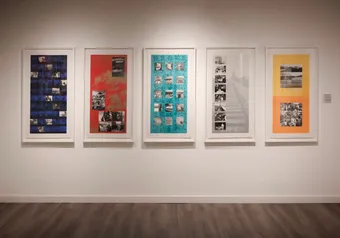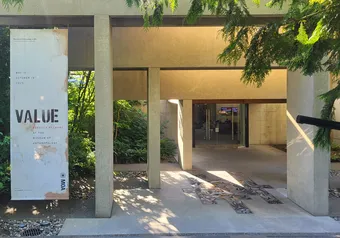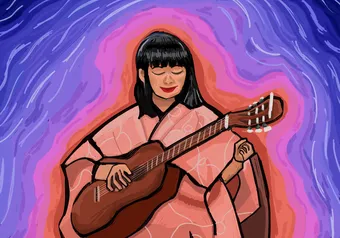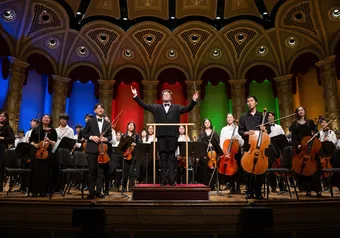In 1949, Harry and Audrey Hawthorn stood in the basement of the Main Library to inaugurate UBC’s new Museum of Anthropology (MOA). On September 14, MOA opened its doors for free to all patrons for its 70th anniversary open house event.
The day was filled with tours, hands-on activities and opportunities to go behind the scenes. While MOA is usually busy with tourists and the occasional school trip or student group, the museum was jam-packed with guests of all ages. Delight was abundant as children dragged their parents through activities like the kids’ conservation lab, rope-bracelet making in the Lab of Archaeology and the oh-so-popular paper puppet workshop. The occasional child-free adult was even brave enough to sit down and partake in the activities themselves.
The rolling whir of the drawers in the Multiversity Gallery acted as the white-noise backdrop to hushed excitement of visitors sharing their findings. The drawers, which hold hidden treasures that MOA doesn’t have visible shelf space to display and are usually given only minimal love during normal days, were being opened and closed with vigor. “Look at this robe!” “Check out these fish hooks!”
While countless objects and artifacts sat waiting to be explored in the normal gallery spaces, for this special anniversary occasion the museum staff also opened up MOA’s conservation lab and collections storage facilities for perusing.
In the conservation lab, Senior Conservator Heidi Swierenga with other staff and volunteers showed visitors the difficult processes that items at MOA go through. Protecting them against different insects, erosion and discolouration takes a lot of biological and chemical knowledge that conservators at MOA specialize in. For the average museum-goer, however, it was pretty neat just to see the fancy machinery and to hear about it all in plain terms.
Over in the usually private collections storage sit an additional 28,000+ items, patiently waiting their turn for public display. Staff and collections experts stood among the rows of textile drawers, ready to discuss the concealed beauties. One staff member discussed the fact that they were filling their storage facilities far faster than expected. She also spoke about how it was a little-known fact that items in MOA storage can be explored online and how users could actually submit requests to personally view them.
After strolling through the different exhibits, we ended the day in the MOA Library and Archives unit. One large monitor hosted a “70 Years of MOA” slide show, featuring digitized photos from the early years of the museum. A long table also displayed posters from various exhibits, as well as a box of original photographs — only to be looked at with fancy gloves, of course. As silly as it might have been, it felt special just to sit and pull out photos at random, reading the dates and imagining what it must have been like when the pictures were originally taken. The fancy gloves really helped with this.
MOA really does have something for everybody. From Ming Dynasty-era paintings to a very accurate Kanye West puppet (sans Yeezys), there is so much to see. As the museum looks towards its 100th anniversary, I can only imagine how much more there will be to explore in the coming years. And while there were lots of special anniversary festivities, many people aren’t aware that much of what happened Saturday at MOA happens every day. Any day of the week, you can check out tours, activities and even opportunities to go behind the scenes.
General admission is always free for UBC students, staff, faculty and all Indigenous peoples. So if you missed the 70th anniversary, don’t worry — you don’t have to wait for the 100th to see the magic at MOA.
DISPATCH IMAGE EMBED ERROR WITH ARTICLE
First online
Share this article


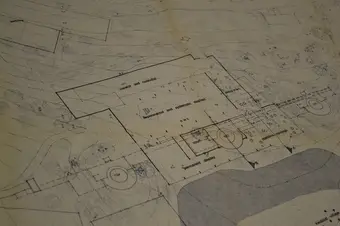
![['auto']](https://storage.googleapis.com/ubyssey/media/renditions/ppaper_uppett_.width-1000.format-webp.webp)
![['auto']](https://storage.googleapis.com/ubyssey/media/renditions/drawers.width-1000.format-webp.webp)
![['auto']](https://storage.googleapis.com/ubyssey/media/renditions/moa_bonette_.width-1000.format-webp.webp)
![['auto']](https://storage.googleapis.com/ubyssey/media/renditions/moa_computer_.width-1000.format-webp.webp)
![['auto']](https://storage.googleapis.com/ubyssey/media/renditions/dsc_0348.width-1000.format-webp.webp)
